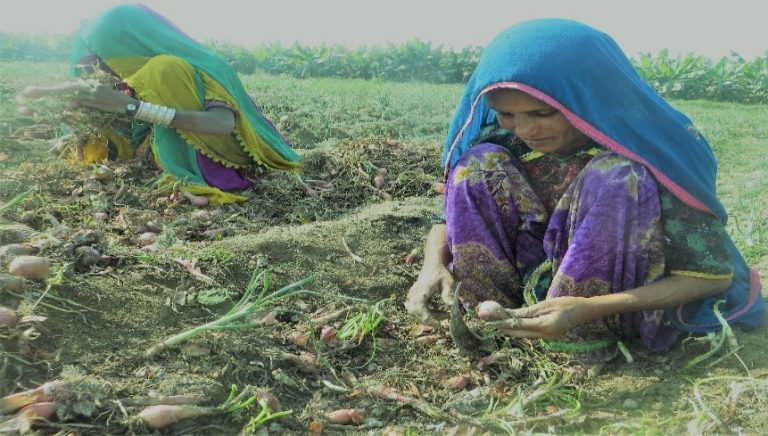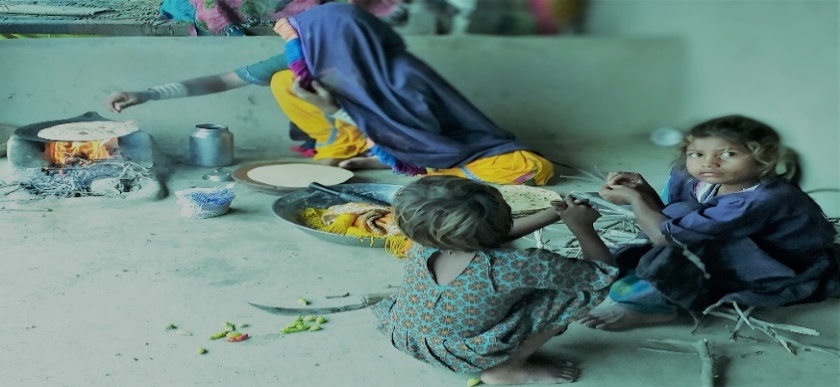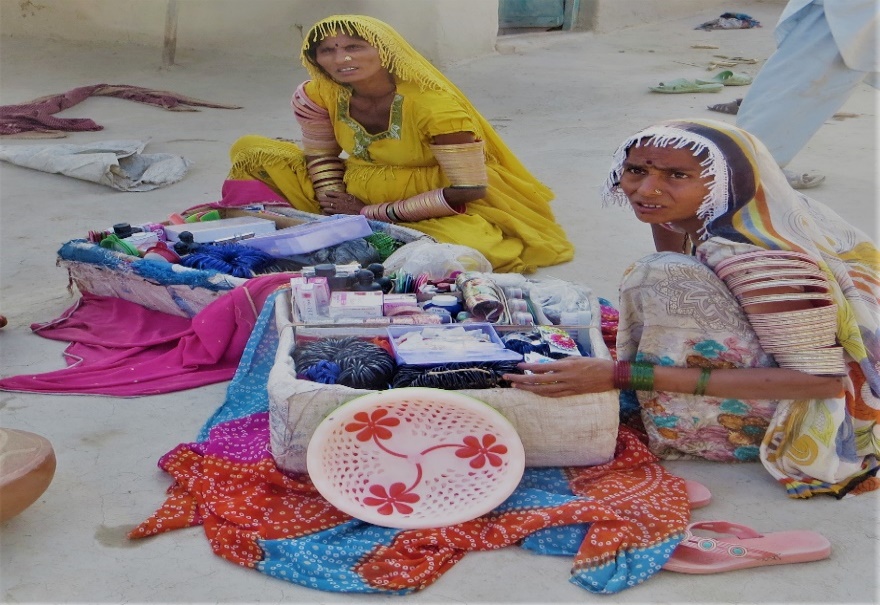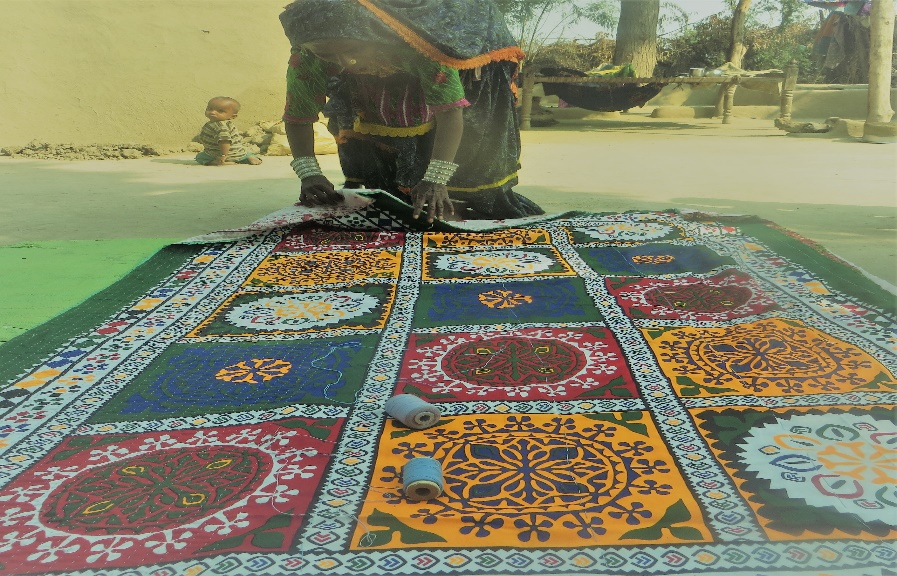
Pathways and solutions to these challenges suggest that the work of women farmers must be recognized at the government level by giving them land ownership right within the parameters of much-needed land reforms, along with ensuring the due share in inheritance.
By Nadir Ali Shah | Amna Ejaz
Rural women have an indispensable role to play in the vast tracks of agricultural fields in cultivating and harvesting different seasonal crops along with breeding of livestock in rural parts of Pakistan. According to the report ‘Status of Rural Women in Pakistan 2018’, women make up about half of the country’s total population of 208 million, and some 65 million of the women residing in rural areas are involved in multiple agricultural, livestock, and fisheries activities. These rural women, who outnumber men in agricultural work, start their activities from sunrise to sunset that includes working in the fields, filling water from wells, cleaning houses and cooking for the whole family.
Although they largely contribute to agricultural and food productions together with household chores, but their multifaceted work is often not recognized owing to the highly embedded system of patriarchy. Hence, despite agriculture being a huge economic opportunity for these women, they on average earn less from these sectors as compared to their male counterparts. The extent of this lost, or rather ‘stolen’, opportunity can be gauged by the fact that given agriculture’s contribution of 20 percent to the overall GDP and formally engaging 28 percent of the women, Rs.683 billion, or 2.6 percent of the GDP, is the estimated yearly value of the work put in by women.

For rural women the picture becomes grimmer as report reveals that 89 per cent of rural women do not possess their own house and 96 per cent do not possess any land. Other asset ownership, including ownership of income generating assets also remains low. The challenges do not end here; the literacy rate is lower in rural areas than in urban, with only 4 percent of the rural women holding college degrees. The lack of education, coupled with the societal norms, leaves these women with a lack of self-initiative, and inculcates in them a state of vulnerability and dependence on men. To make matters worse, these women are also often marginalized under development policies, thus creating more obstacles and impediments along their way towards social wellbeing.
Pathways and solutions to these challenges suggest that the work of women farmers must be recognized at the government level by giving them land ownership right within the parameters of much-needed land reforms, along with ensuring the due share in inheritance. Rural women empowerment must be ensured through girls’ compulsory education, Technical and Vocational Skills Training (TVST) and micro-investment loans for income-generating activities with guided awareness so that these women can get rid of this vicious cycle of poverty, despondence, hapless and exploitation.
Evidence from the field shows that rural women are getting benefits by using the Community Investment Fund (CIF), a micro-investment loan for income-generating activities, under the EU-SUCCESS program. So far, 103,932 poor households have benefited from CIF in this program in eight districts of Sindh.

As per the words of CIF-beneficiary, Shanti (38 years of age), from Mohammed Saleh Otho village, Tando Allahyar, “I received Rs.30,000 under CIF and bought commodities of artificial jewelry. I visit door to door as a street vendor in nearby villages to sell these items and earn daily Rs.300 to 500. Before this, I used to work as a daily wage farm laborer so I have now shifted my work from farm labor to a street vendor. Now I am also sending my two daughters to school as I have realized that education is necessary for girls.”
The TVST beneficiary Rambai, 35 years old, resident of Mubeen Burfat settlement, Tando Allahyar, told, “I got training of Rilli making and now earning Rs.12,000 to 15,000 per month which is great economic support for my household. Before this, I worked as a sharecropper but could not earn the current amount ever. Now I concede that skilled labor is much better than unskilled labor that gave us nothing in the past.”
“Since childhood, I have been working as a farmer. When I was a child, I used to work with my parents in agricultural fields and after marriage I am doing this activity with my offspring. As tenant farmers we earn less as we don’t own land, and thus, we live hand to mouth,” said Lakshmi, 48 years old, of Leela Ram village of Tando Allahyar district of Sindh.
She added, “Since my family and I are illiterate and unskilled, we cannot engage in formal paid employment or move to big cities for work. However in a nearby village Mao Patel, our relatives received stitching training under the EU-SUCCESS program and now they are earning money every month,” said Lakshmi.

As yet, 26,529 people have received training under the TVST component of the EU-SUCCESS program.
There is no denying the fact that rural women are the cornerstone of the agrarian sector, thus, it is high time to acknowledge their contribution to the progress and social well-being of the country. When given the opportunity, rural women also prove to be a driver of positive change in not only their homes but also their communities. In the end, the quote of Quaid-i-Azam is well fitted here, “No nation can rise to the height of glory unless your women are side by side with you….”
______________________
Nadir Ali Shah is an Anthropologist and working as Field Researcher at Rural Support Programs Network (RSPN). He can be reached at nadir.ali@rspn.org.pk
Amna Ejaz is Team Leader Research at Rural Support Programs Network (RSPN). She can be reached at amna.ejaz@rspn.org.pk